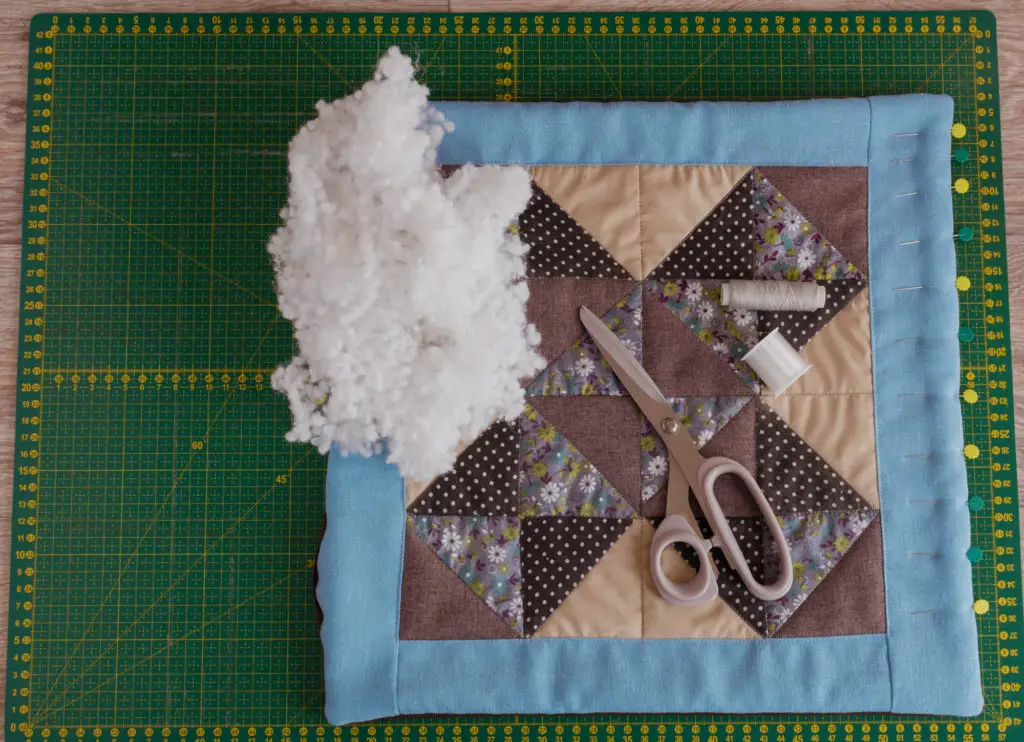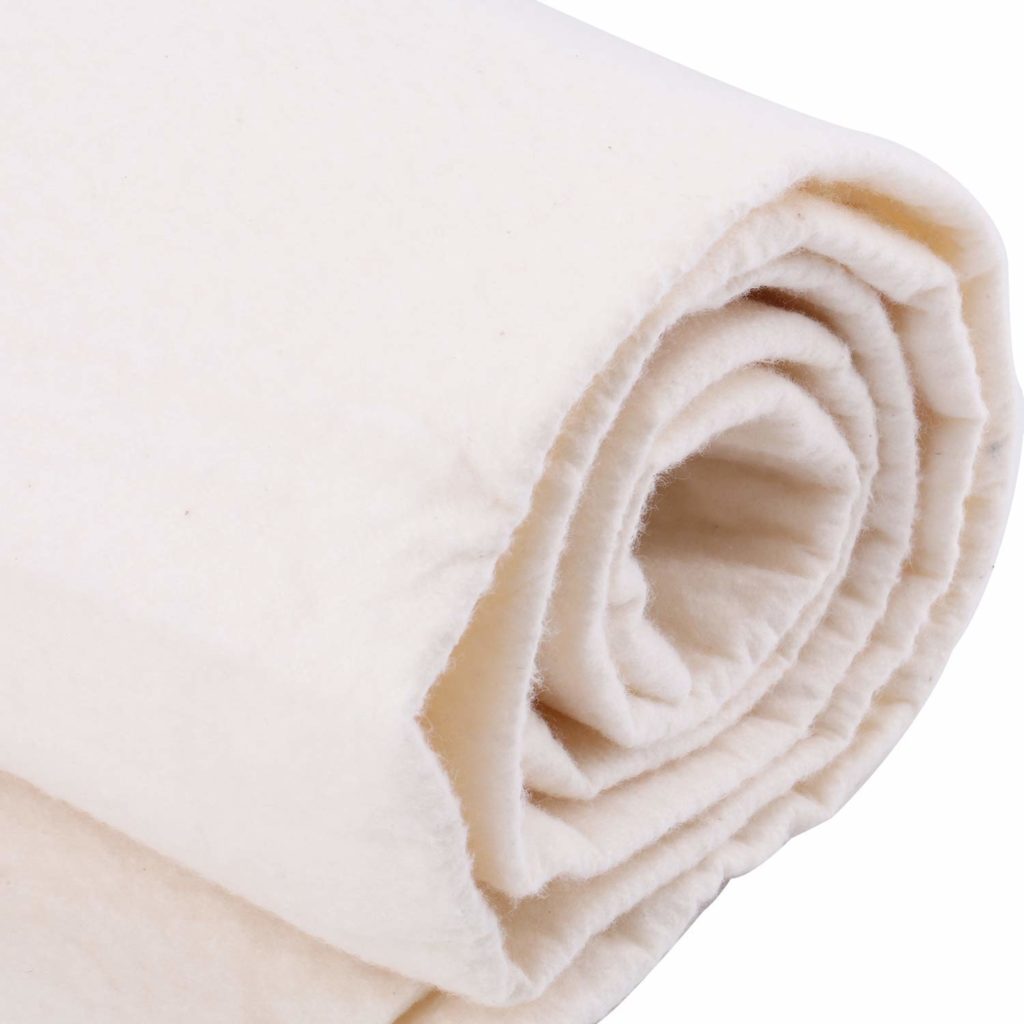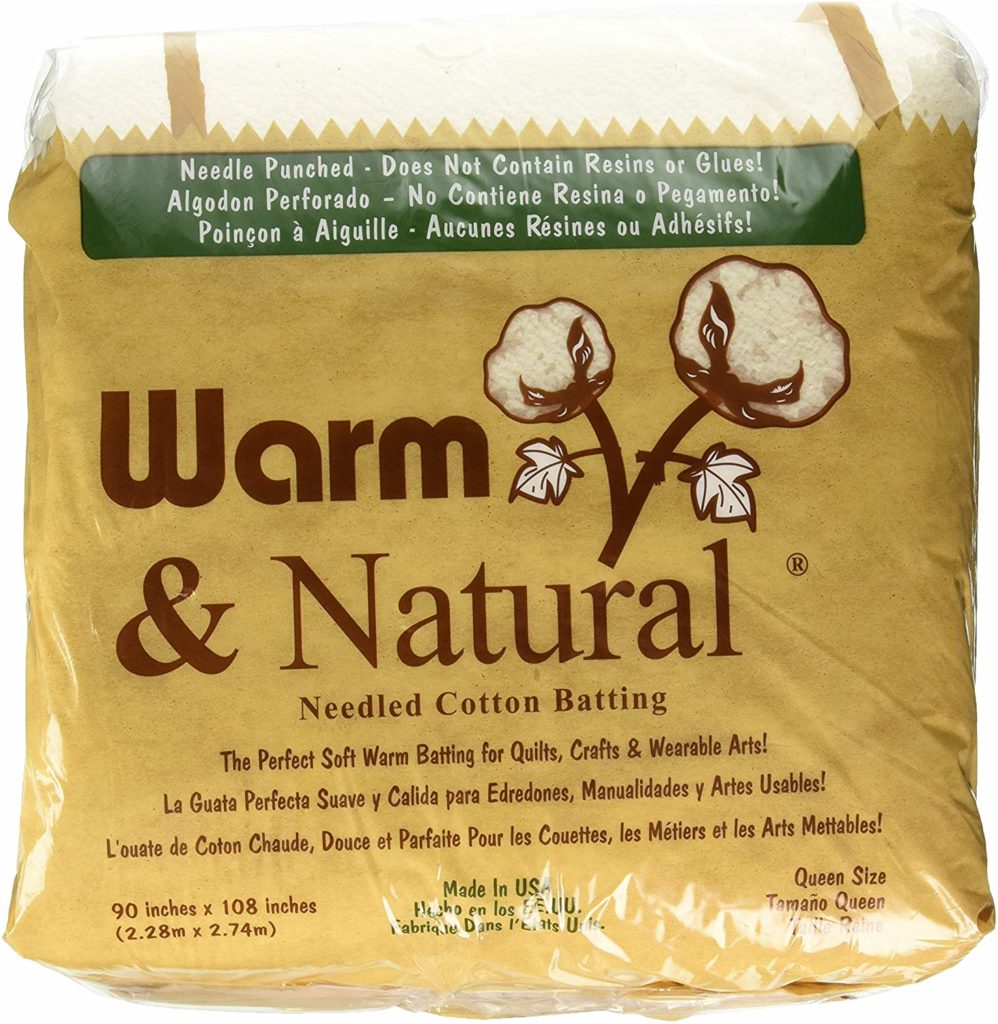Which Batting Should I Choose When Making A Quilt?
You have successfully completed your quilt top, and you feel confident and ready to finish your beautiful project. There is just one problem. You have no idea what kind of batting to use in your new quilt!
There are so, so many different types to choose from.

If you visit your local fabric store, you can be overwhelmed just looking across the batting area. There are bolts, packages and a ton of different prices. Some are different colors and some look enormous while others are so thin that you wonder if they would even work.
The best way to conquer the batting aisle is learn before you go. Read on to find out all about the different types of batting, which projects you use them for and how to care for them. You will also find some wonderful tips to save you money when purchasing your batting.
Different Types of Quilt Batting
Here is a breakdown of the different types of batting along with projects that work great with each type. Generally speaking, those near the top of the list are more readily available at fabric or craft stores. Those near the bottom may have to be purchased from a specialty quilt shop or online.
– 100% Cotton: Cotton is a popular choice for many projects because it holds its shape well while quilting. It is also provides a lot of warmth, but it is heavier than polyester.
This batting works great for quilts that are meant to be used for warmth rather than simply decoration, quilted bags and quilted coasters.
– 100% Polyester: Polyester is thicker and fluffier than cotton. It is light-weight but still adds warmth.
Polyester is a great choice for bed quilts that you do not want to feel heavy, but still want some warmth. It is also perfect for small wall hangings and quilts that are meant to be hung as decoration since it is light-weight.
– Cotton/Polyester Blend: The best benefit that a blend has to offer is that it is fluffier and thicker than the 100% cotton, but still acts like cotton. This means it will be easier to quilt with, especially if you are using a regular sewing machine. It will also hold its shape better than 100% polyester.
Blends are great for bed quilts that do not need to provide as much warmth. They are also good for quilted projects such as stockings or cosmetic bags because they hold the shape without being so heavy.

– Fusible Batting: Fusible batting has fusible webbing that is activated when ironed to the fabric. By ironing the quilt top and/or the quilt backing to the batting, it helps you to keep the layers in place without using the curved safety pins. It is available in one-sided or two-sided fusible.
Fusible batting is cumbersome with a large quilt, but it is perfect for smaller projects such as pieced wall hangings. It also works nicely when constructing large beach bags or storage bins.
– Heat Resistant Batting: This type of batting has a metallic silver layer in the center of it that is heat-resistant. Insul-Bright is a popular brand. It is sold by the package.
This is used for oven mitts, hot pads, mug rugs and trivets. This is not a good choice for actual quilts.
– Resin Bonded Batting: This unique batting is made up of different types of fibers, typically polyester, cotton and wool. Each side is coated with a light resin which serves a couple of purposes. It helps the layers stay together while quilting and also helps to keep the fibers from poking through the quilt.
Because of its high loft, resin bonded batting works best with quilts that have less quilting on them. This leaves the quilt a bit fluffier and makes it easier to work with as well.
– Bamboo Batting: This is another unique batting that is often made of up 50% bamboo and 50% cotton. Bamboo batting washes well and is very breathable, making it ideal for people with allergies.
Because the bamboo breathes so well, it is the perfect choice for warmer climates or warmer times of the year. It is also great choice for light-weight quilted jackets.

– Wool Batting: Batting made of felted wool is super warm without being too thick. It is easy to sew, however there is a lot of weight to it. It may not be the best choice for a smaller, regular sewing machine.
Wool batting is the perfect choice for a lap quilt because it does get quite heavy in a large quilt. It is also perfect for a quilted jacket that is meant to be used as warm outerwear.
– Needle Punched Batting: Layers of fibers are felted together by punching though the layers with needles. This results in a dense, yet thin, batting. It holds heat well, but is definitely heavy.
This batting is dense and stiff, which makes it a perfect choice for items such as storage bins or large quilted bags.
Why Use Quilt Batting Instead of Other Fabrics?
Why use batting when you could just use a layer of flannel or fleece? A serious quilter may laugh if you asked them this question. They would say that it simply is not right to use anything else because of tradition.
A more free-spirited quilter may tell to use whatever you want to use. They are both correct from their own perspectives, so here are some other reasons why batting may be a better choice.
The best reason to use batting is likely how much easier it is to add to your quilt top and backing than to add a whole other piece of regular fabric. Each layer adds thickness, so you do not want to get it so thick that it is difficult to work with.
Some batting that is super thick does not weigh much, so that is another way to look at it. Maybe your machine will go through thick layers easily. If you want a fluffy looking quilt without a whole bunch of weight, then you can get that from batting, but not from fleece or flannel.
Something else to consider is the size that you need. Batting is already available in packages for the standard sizes of quilts from crib-sized all the way to king-sized. If you want your quilt to be easy, just pick up a package the right size.
Even if you choose to purchase it off of the bolt instead of pre-packaged, it is available much wider than most other fabrics. Having wider batting that does not need to be pieced makes the whole process easier.
Finally, you can usually get great deals on batting. If you make a lot of quilted projects, you can get spectacular deals when you purchase the whole bolt. Then you have it when you need it, although you do have to cut it to size.
Things to Consider Concerning Cost
First of all, never pay full price for batting. With large chain stores, such as Jo-Ann Fabrics, you can always find a coupon if the batting is not on sale. While the best deals are often on full bolts, you can also find awesome deals on packaged batting if you keep your eye on the sales.
Check advertisements each week, or search online sales to see who has the best pricing for what you need. Take into consideration the cost of shipping if you find a good deal online. Also, check to see if the store has an app because sometimes they have coupons on their apps.
Always look to see if there are additional store coupons or online coupon codes that you can use. If you are purchasing online, then be sure to sign up to receive emails from that company prior to making your purchase. Often times, they will send you a coupon for an additional percent off your entire first order.
That being said, the prices vary greatly depending on sales and coupons. You can pay anywhere from ten dollars to about seventy-five dollars for a full sized quilt, depending on the type and brand that you choose. The best thing is that it is totally affordable as long as you buy at the right time.
How to Care for Batting
If you are going to use your batting in a quilt that will be used on a bed or as a throw blanket, then you may want to pre-wash it if it has cotton in it because it may shrink. Check the package for directions as different types of batting require different types of care.
If you choose to preshrink cotton or poly/cotton blends, you can simply wet the fabric rather than running it through a cycle in the washing machine. Then use a low setting on your dryer. Polyester does not need to be preshrunk because it does not shrink.
Some types of batting, such as fusible batting, cannot be pre-washed because the webbing will melt away. These are often preshrunk so that you do not have to worry about that.
Some people do not preshrink their batting because they like a fluffier look, which occurs if the batting shrinks away from the stitching. Others want it to lay nice and flat, which is when preshrinking is handy because it will not pull away from the stitching.
In Conclusion
Choosing the right batting is not so difficult once you understand the different types and why you use them. Go to store with confidence, but do not be afraid to ask for help if you cannot find what you are looking for. Have a wonderful time putting together your quilt!

